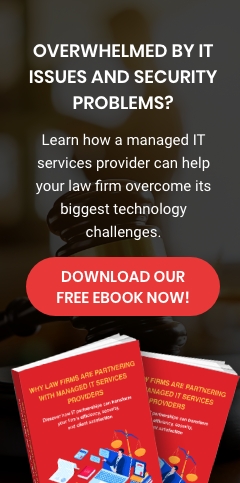We all receive spam emails. Spam can be anything from events newsletters to generic banking reminders to online grocery deals. But while most spam emails are generally harmless, there are times when they contain dubious content that can put users and organizations at risk.
Your inbox’s spam folder likely has at least one or two spam emails that contain dubious links and sketchy messages. These emails may come from people pretending to be attorneys asking for an advance fee so they can release more money to you. Another common tactic is sending fake invoices.
Email-borne threats are some of the most common cyberthreats today. According to recent studies, as many as 85% of all organizations worldwide have been targeted by email-borne phishing schemes in 2020. What’s more, email spam costs businesses $20.5 billion annually.
Related article: Helpful tips for keeping your email safe
What are the main types of email-borne threats?
There are many types of email threats, with various levels of complexity and attack rates. The three most prevalent types are as follows:
-
Phishing
Phishing is a form of social engineering in which an attacker attempts to gain your trust and persuade you to divulge information — such as birth dates, Social Security numbers, or home addresses — that you wouldn't normally give out. A phishing email often involves the sender pretending to be a “trusted entity,” like a representative of a reputable organization, a close friend or relative, an acquaintance, or simply as a well-meaning human being.
Phishers will send an email containing an innocuous-looking link in the email body that leads to a malicious website where they can extract your information. They will strive to make these websites look as legitimate as possible to dupe even security-savvy people into divulging their information.
-
Malware
Unlike phishing emails, most malware-laden email threats are computer-generated, so they often come from unknown senders, have blank or vague subject fields, and contain a message that conveys urgency to persuade you to open or download the attachment.
Clicking on these attachments would download the file onto your device. This file will then download and install the malware. This malware will quietly monitor your browsing habits and even take copies of keystrokes that can be used to steal usernames, passwords, and other personal information.
-
Darknet
Darknet email threats are extortion attacks launched by cybercriminals purporting to be a person from the darknet, a hidden network of internet sites often accessed by users who want to keep their internet activities private. Darknet email senders will pretend to be a member of known hacking groups to scare you into meeting their demands. Darknet email attacks are sophisticated, and attackers usually signal that they've already obtained your email address and other personal information.
Most of these attacks are graphic in nature, as attackers will typically threaten to release compromising information or pornographic photographs of you if their demands aren’t met. Generally, these emails are just scams that prey on fear, but they should always be taken seriously.
Related article: Signs that an email is harmful and should be deleted immediately
How can you defend against email-borne threats?
Facing email-borne threats can be daunting, but being proactive about your security makes it more manageable. Here are some things you can do to prevent email threats:
-
Implement email policies that are robust and up to date
Organizational email policies play a huge role in preventing email-borne attacks. They ensure that the email systems have the resources and tools in place to keep threats out. And because email-borne attacks are always evolving and becoming more sophisticated, you should regularly update your policies to ensure you can always deal with the latest threats.
-
Use appropriate tools and software
A proactive defense system is more effective than a reactive defense system. Proactive defenses like firewalls, end-to-end email encryption, inbound and outbound spam and virus filtering, URL scanners, and other email protection tools will give your business the best chance at preventing attacks.
You should also use tools that can detect unusual activity on your mail server. While most malware work quietly in the background, the actual attacks will often be detectable with the right software. For example, a sudden spike in email traffic or an inordinate amount of login attempts may signal that an attack is underway.
-
Conduct cybersecurity training
Train your workers to recognize and handle potential email threats. Regularly update your staff on cyberthreat developments, attack email content trends, and other information they may need to keep up to date with the rapidly evolving email-borne attack environment.
Related article: How to protect your business from spam and phishing emails
Ensure that your business is geared up and ready to fight all kinds of cyberthreats. USWired’s cybersecurity services will give you peace of mind because we'll make sure that your business data is always safe. Contact us to learn more.


